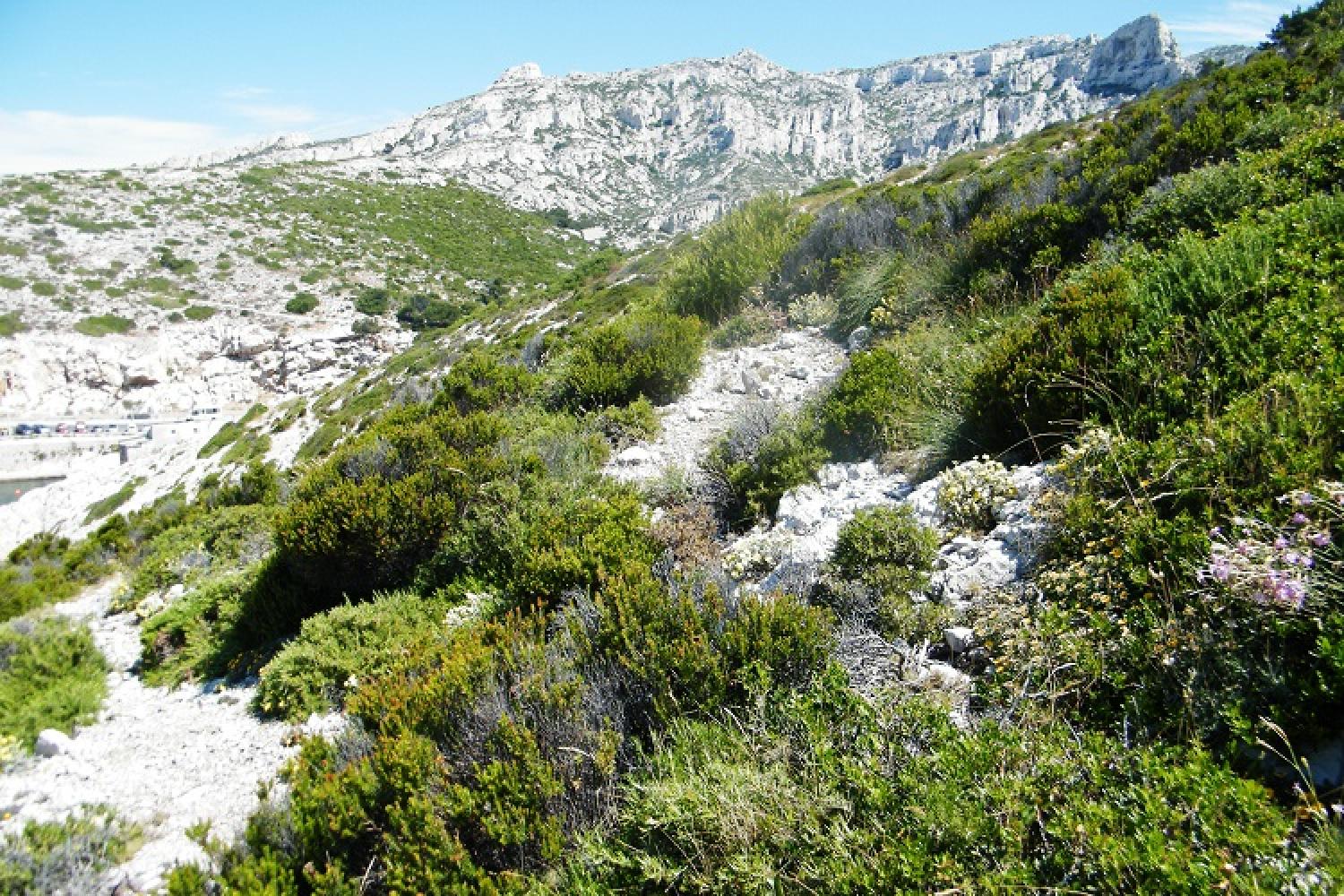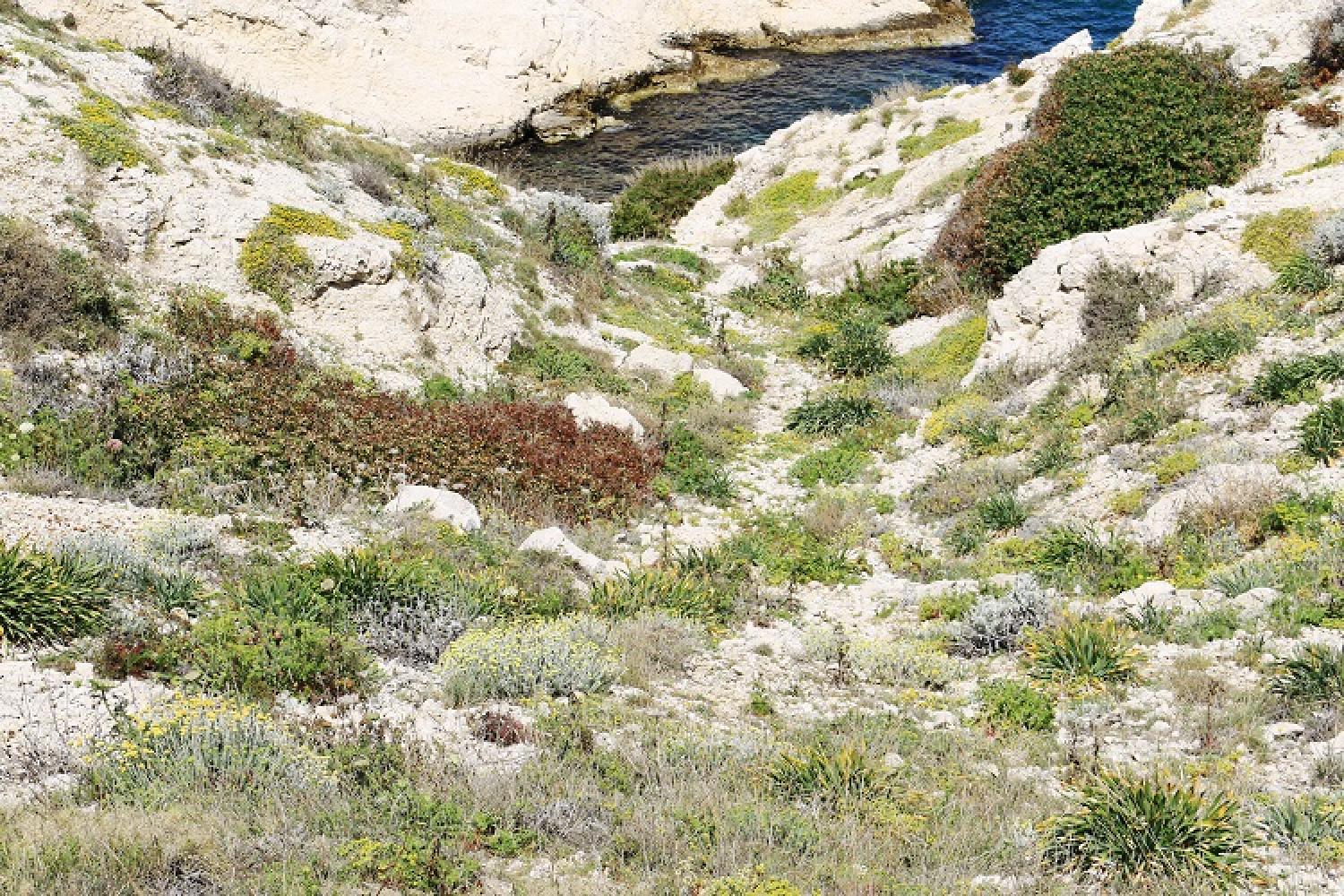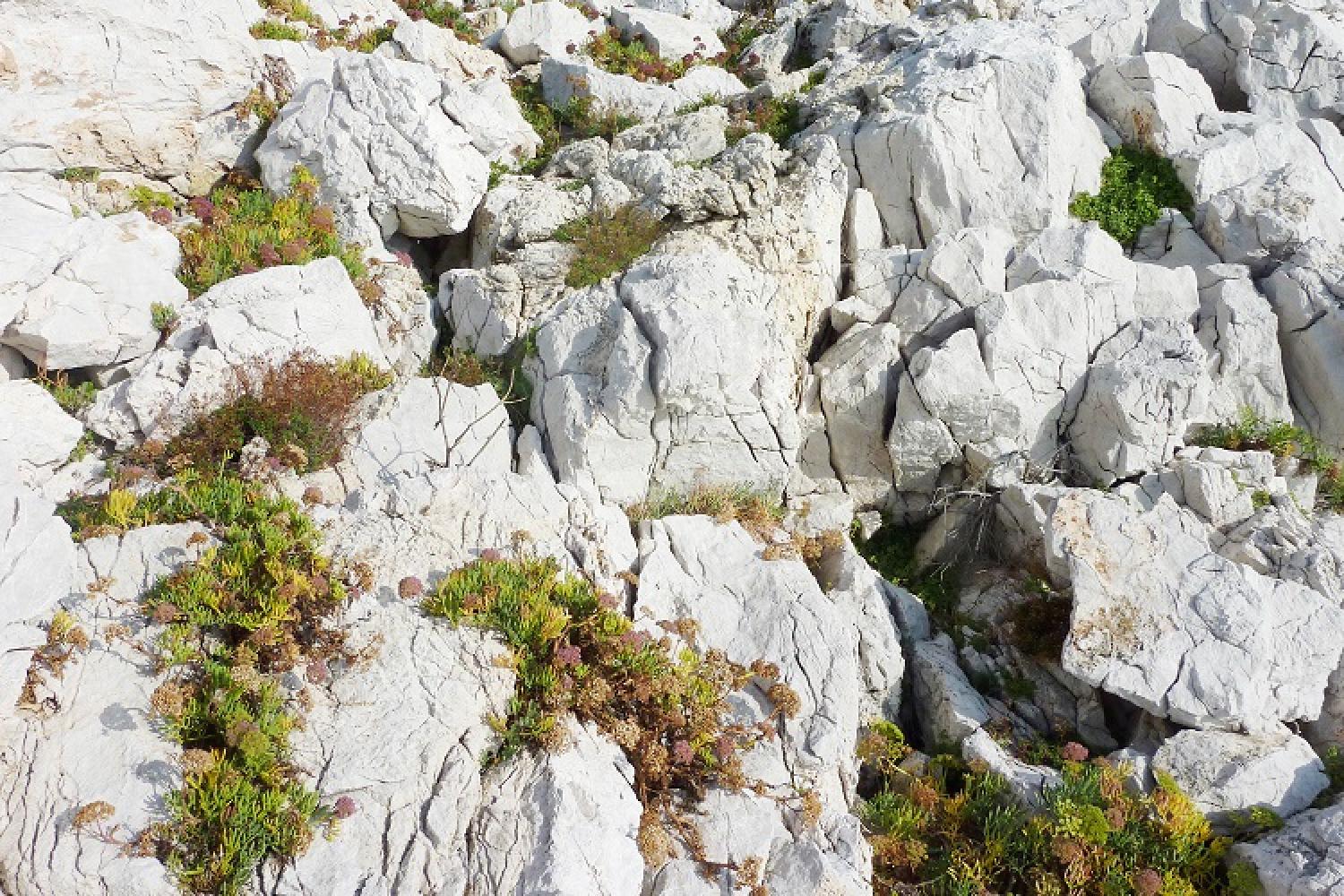Description
The coastal habitats are characterised by the presence of numerous plants that are resistant to sea spray and wind. These make up a mosaic with many facets, often intertwining with each other.
- The coastal ‘garrigue’ (mediterranean scrubland) is made up of plant species the appearance of which is often sculpted by the wind. It is denser and lower than the “standard garrigue”. This makes these natural habitats even harder to penetrate!
- The “phrygane” is a formation comprised of small , thorny bushes that have devised different techniques to protect themselves from the sun. These include felt-like vegetation, loss of leaves in the summer, compact bushes.
- The sea lavender-covered coastal rocks are the last plant formations before the sea. Plants that are the most exposed to sea spray, wind and strong glare can be found here. These plants are often fleshy, dense or are annuals that develop in winter and then dry at the end of spring.
Main associated species
- Sea daffodil (Pancratium maritimum)
- Sea fennel or rock samphire (Crithmum maritimum)
- Silver ragwort (Jacobaea maritima)
- Sea lavender (Limonium minitum)
- Yellow sea daisy (Asteriscus maritimus)
- Astragale de Marseille (Astragalus tragacantha)
- ’Thymélée tartonraire’ (Thymelaea tartonraira)
- Plantago subulata



